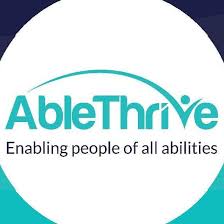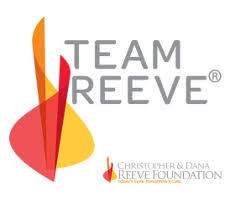|
At Beth’s last Harvard Women’s Swimming and Diving banquet, the team donned gorgeous fresh-flower leis, gifts from a senior from Hawaii. Receiving the Coaches Award for attitude and contributions to the team surprised Beth. She presented her gold medal to Coach Morawski in gratitude.
The head coach framed the gold with a written tribute. The medal found a new home in the hallway leading to Blodgett pool among pictures of Harvard’s best. Beth would have more to add to her legacy. When the college swim season ended, Beth immediately plunged into a new training cycle. She worked with her Harvard coaches to prepare for the Paralympic Trials in April. Other Harvard teammates trained for the USA Olympic Trials or the Olympic Trials in their home countries. “The most amazing thing about Beth is though we classify her as someone who's disabled,” Coach Becca told a reporter, “she's just someone who shows the people around her how able she is.” At the end of February, Beth woke up one morning with a high fever and congestion. A chest x-ray showed a small pocket of pneumonia in the lower right lobe, not as severe as her first pneumonia. She insisted on trying antibiotics first before considering a hospital stay. I couldn’t convince her to minimize her swim training for more than a few days. She gradually felt better despite a relentless senior year and pool schedule. Next: Minneapolis Trials meet for the Beijing Paralympics!
1 Comment
Beth’s senior year at Harvard created a mosaic of color squares on her computer’s calendar. Orange for classes, red for assignment deadlines, yellow for disability work, blue for swim workouts, purple for fun, and green for everything else, including volunteering and swim meets.
Beth made a concerted effort to increase the purple blocks on her calendar. She participated in more college activities, most for the first time, including the annual ‘80s Dance, ‘90s Dance, A Cappella Concert, and Comedy Show. She also cheered for her friend Brittany during a rugby game. “Brittany got me out of my shell during my senior year,” Beth said. “Before then, I hardly ever went out socially.” Early one weekend morning after the T stopped running, Beth, Brittany, and three friends hailed a taxi in Boston. The driver said only four of them could ride at one time. Brittany creatively insisted Beth needed to sit on someone’s lap because of her disability. The driver kept his thoughts to himself as all five girls rode in the taxi to Harvard. With a full load of classes, Beth prioritized her homework, kept up on writing assignments, and saved books to read later. She no longer tried to read every word. Graduate school applications also required chunks of time. She applied to four law schools and a doctorate program at Harvard’s School of Public Health. ❤ Fun fact: Years later, Beth was a bridesmaid in Brittany’s wedding. This May (2019), Brittany will be a bridesmaid in Beth’s wedding! Exciting book news: my Washington DC, Ohio, and Boston events are set! bit.ly/mybooktour Signed copies are available at bit.ly/memoiroffer. Amazon has the paperback and kindle e-book for pre-order, with both coming very soon! ThAnK YoU FOR FOLLOWING MY BLOG! SOME OF YOU HAVE ASKED HOW TO GET A SIGNED BOOK: YOU ARE THE FIRST TO KNOW ABOUT EARLY ACCESS TO SIGNED COPIES OF MY NEW MEMOIR, STRUGGLING WITH SERENDIPITY! I am so grateful for your support and encouragement since I started sharing our story in this blog three years ago! One fall morning, Beth wheeled across the pool deck at Blodgett, and the Harvard men’s coach led his team in applause for her Rio medals. She swam six days a week in and out of the HWSD season during her senior year.
Coaches planned her training cycles to build up to her most important swim meet to date, the Paralympic Trials in April. Occasionally, I met Beth in the Blodgett lobby, helped her over the alarmingly-inaccessible bridge to Harvard Square, and bought us brunch, our favorite meal of the day. I encouraged her to use the bus after practice more often, but she didn’t. Maria taught five preschoolers with multiple disabilities in the Cambridge Public Schools. She started the classroom with two full-time teacher’s aides, including one with a master’s degree. In the Boston area, many adults with college degrees settled for underemployment to obtain health insurance. One of Maria’s students with complex medical needs moved away from Cambridge, a sanctuary city, to Boston with her mom, an illegal immigrant. I worried with Maria about their deportation to a country with subpar children’s services. I volunteered in her classroom a few times and helped with field trips. Maria's enthusiasm and compassion created a safe space for the children, who progressed at a surprising pace. Maria created and followed an intense schedule in 15-minute increments to allow her and her teacher aides to maximize instructional time. She had high expectations and energy. I remember thinking that the residents at my old jobs would benefit from Maria’s level of passion. Sadly, staff tended to have low expectations at too many institutions and group homes. I watched Maria work enthusiastically with a boy speaking his first words. Later, she sat quietly on the floor, blocking the only exit out of a padded play space where a little girl threw a major tantrum. The child tried to get Maria’s attention in negative ways. My daughter ignored the screaming. I thought, “She’ll be a great mom someday.” During a musical performance for parents, all the children, nonverbal and otherwise, played a role. I sat on the stage next to a girl’s tiny wheelchair and held a toggle switch for her to push. The switch played a recorded phrase. The boy learning to speak wore a butterfly costume. He flapped his wings and bounced to the microphone at regular intervals to cheerfully yell, “Chomp!” It was a word he couldn’t say a few months before. The audience loved it. I did, too. Next: Another spike! Beth’s Harvard coach requested that she meet a little girl with a physical disability from a local club team. They swam together twice. Beth dabbled a little in coaching and talked to the girl and her mom over dinner. A Paralympic swimmer in Michigan also asked Beth to mentor a teenage girl with a new spinal cord injury. Ongoing friendships included her first mentee from Seattle who visited Harvard for a college visit almost four years after they began to exchange emails. They met face-to-face for the first time and caught up over lunch in Harvard Square.
Beth’s web of connections kept growing. My new Massachusetts doctor sent me to chronic pain classes at the Benson-Henry Institute for Mind Body Medicine. The institute was founded by Dr. Herbert Benson, the cardiologist who wrote The Relaxation Response. I drove east on Rt. 9 to Roxbury, a suburb of Boston. A nurse led the classes, teaching us about the science of meditation and how those who meditated regularly experienced significant health benefits. My diverse classmates experienced a wide range of medical problems. The nurse encouraged us to accept pain, the same concept that angered me when I first heard it in Ohio. Since then, I had found no cure for my headache. I understood that resisting pain did nothing good. Dr. Benson visited my class and spoke about pain as a benign thing, to separate it from our identities. To enable us to drain its power. To prevent pain from diminishing our experience of life. To make it an inescapable reality more than an obstacle. To make peace with multiple causes of pain, some clear and some not. I tried. I completed homework and daily meditation practice. At our last class, we shared unanimous results. All of us improved, including me, though our actual pain levels stayed the same. What? Across the board, our minute by minute and hour by hour responses to pain improved, enabling us to cope better day to day. The class also helped me gain perspective as I met others with debilitating pain. It could always be worse. Next: “Chomp!” We prepared for another 12-hour trek. I drove with both of my girls in Maria’s Ford Focus from Tiffin to Cambridge. No hatchback or chair topper. We stuffed the small car to the hilt with Maria’s belongings—plus a wheelchair. Beth sat cramped in the back seat for the all-day drive. We planned to get her out of the car to wheel around or move the contents to give her a different position, but Beth shifted on her own and chose to stay put to get to her dorm faster. We drove directly to Pforzheimer House, where Maria and I camped out in Beth’s suite that night. In the morning, a real estate agent showed us apartments.
Maria would start her new teaching job in less than a week. After viewing several places, Maria decided to rent the second floor of a house near Davis Square in Somerville to avoid the even higher rent in Cambridge. She could move in the next morning. Next, we shopped for a bed. Maria picked one to be delivered the next afternoon. Maria and I slept in Beth’s dorm room one more night. Bright and early the next day, we unloaded the contents of her car into the empty apartment. Maria brought her shopping list for a Target run. We made it back in time for the bed to be delivered. The new box springs wouldn’t fit up the narrow, winding stairway to her apartment. The young delivery guys tried another way. One precariously balanced on the front porch steps and pushed the box springs straight up to the other who leaned over the second-floor balcony. Success. I stayed two more days before flying back to Ohio and treasured the time. I admired Maria’s bravery in moving to an unfamiliar big city with her sister the only person she knew. Next: Another emergency room visit! Beth's right elbow swelled and hurt for the first time. Initially, her doctor and the team’s athletic trainers recommended compression wraps and anti-inflammatory meds.
She never stopped swimming, feeling healthy and stronger than ever, except for the elbow. The college competition season approached. One of Beth’s friends on the U.S. Paralympics National Team also swam on the Yale team and successfully fought to compete at all meets, home and away. In contrast, Beth appreciated the time she gained by not traveling with the team. “The trips sounded exciting but staying back gave me more time for school work and volunteer activities,” Beth said. She sent swim workouts to the U.S. Paralympic National Team manager and reported her whereabouts to the United States Anti-Doping Agency for random drug-testing. Little to no social activities. Yet. Often the last to leave the varsity locker room after a practice, with her hair wet, she wheeled up the hill at the entrance to the sidewalk on North Harvard Street. She wheeled toward the Square to her classes. On frigid days, the hair below her hat freeze-dried. The curb cuts on the bridge over the Charles River had steep inclines, impossible in any kind of wheelchair. Unwilling to ask for help from one of the endless pedestrians, Beth wheeled in the street alongside the curb instead, sharing a lane with nonstop cars while drivers turned aggressively in front or behind her. Across the river, Beth often stopped at Dunkin’ Donuts for a soy latte and a whole grain bagel with blueberry cream cheese. Peet’s Coffee also was a favorite a little farther down the street. One morning at the Kennedy School of Government, she rode the elevator with Madeleine Albright, the first woman Secretary of State. Beth’s largest class, Justice, attracted hundreds of students to Sanders, my favorite theatre. Dr. Michael Sandel led lively discussions on all aspects of justice that kept students engaged—and the public as well. Harvard aired Justice online, for free. Next: Sisters in Cambridge! Back home in Tiffin, Ohio, I accepted an activities job at the upscale Elmwood nursing home. Almost 30 years earlier, 19 and newly married, I worked as the first manager of Elmwood’s first group home in the nearby town of Clyde.
I worked five days a week on the Alzheimer’s unit, learning more than I wanted to know about the disease. On the best days, we sang songs, told stories, made crafts, played games, walked together, and laughed. On the worst days, a sweet woman died in her bed or alarms blared when residents unable to walk thought they could. Or someone fell. Or a medical emergency required an ambulance. Sirens always reminded me of the night of my car accident. One November morning, Beth stopped at the dining hall for coffee on the way to a Harvard Women’s Swimming and Diving home meet. The cup slipped and scalding liquid spilled on her left thigh. She felt discomfort, but when she removed her leggings at Blodgett, she didn’t expect to see the small red hole in her thigh. Her coaches discussed the emergency room and asked a dermatologist friend in the stands to look at it. The doctor, a former college swimmer, cleaned and covered the third-degree burn, emphasizing the need to prevent infection. Wide scarring when it healed would be unavoidable. It surprised me that the dermatologist gave her permission for Beth to compete at the meet. I heard about the burn the same day, but not the severity. She neglected to disclose all the details. She left out the part about the burn exposing the bone. I assumed it wasn’t serious since the doctor and coaches allowed her to swim. She didn’t want me to worry. Nevertheless, I was alarmed when I saw the burn a few weeks later. Skin problems healed slowly for quads, and infections? Dangerous. We re-visited the issue of drink holders for her wheelchair, rejected in the past. Thankfully, Beth gave in this time. Next: Elbow Woes! My oldest daughter Maria stuck to her plan to relocate to Boston when she graduated from Heidelberg. She hustled with a heavy class load to finish a double major in three and a half years. Before long, two of our three children would be in Massachusetts.
John agreed with me that we could live there, too. He knew how much I wanted to be with our kids. He started his thirtieth year of teaching in Tiffin, his last before retiring in Ohio. We planned to sell our house in the spring and move that summer. John decided he’d teach for a few more years in the Boston area because of the much higher cost of living there. At Harvard, Beth swam six times a week her junior year, and rode the bus at 6 a.m. with her teammates who lived in the Quad. She often arrived at Blodgett in sweatpants, with a swimsuit underneath that she’d pulled on before getting out of bed. The team stretched together on deck before getting in the water. Skipping practice? Not an option. When the rest of the team swam doubles, a second practice on the same day, Beth stayed with one. Coaches added a snorkel to the modified swim paddles and floats in Beth’s equipment bag. The snorkel eliminated the breathing challenges of her forward strokes. During hour and a half workouts, she typically swam about a hundred laps of 25 yards each. During peak times in her training cycles, workouts hit two hours and 3,000 yards, almost two miles. “My undergrad was devoted to swimming and health policy,” Beth wrote. “It was a struggle sometimes to be independent and keep up with the work, but I grew a lot during that time. I learned how to make new friends, to manage my disability, and to advocate for myself—not to mention becoming a much stronger swimmer. I like to joke that I spend more time in the pool than I do in class. I love this pool!” The locker room had a new plastic shower chair Beth finally requested. From a sitting position in her wheelchair, taking off a wet swimsuit in the varsity locker room required patience. I suggested suits one size bigger, but she liked them tight. Resolve and repetition gradually made dressing in her wheelchair easier, from button down sweaters to the zipper on her skinny jeans. Next: My New Job! Back at Harvard for the start of Beth’s junior year, I carried her chair and other items up from the basement storage room. I set up her dorm room before I drove back to Tiffin. She changed her concentration from biology to health care policy with the goal of attending law school. Beth told a reporter about her DC summer and why she changed her major.
“I really fell in love with the policy side of things. After the internship, there was an opening in Senator Kerry’s Boston office to work specifically on disability issues with one of his staffers. They invited me to do that. So, throughout my entire school year I worked in his Boston office. It’s completely different, because it’s much more focused on his constituents. But I really loved that, because you get to talk to people on an individual basis.” Beth rode the T by herself from Harvard Square to the Senator’s office near the Massachusetts State House. One day a week, sometimes two. She stayed on the subway and passed the T stop closest to the Senator’s office to avoid a steep hill. She planned for extra time to wheel the additional distance back to the office, avoiding the inaccessible T stops. She signed up for text alerts to get advance notice when elevators broke down. “When I answered phone calls, I recognized a desperation in their voices as they reached out to their Senator, who was all too often their last hope in solving their issues,” Beth said. “It was rewarding to resolve specific disability-related complaints, but some we could not help.” She stayed in touch with Mary in the DC office and joined the Senator and staff for events, including a campaign rally at Boston’s Faneuil Hall for Deval Patrick, soon-to-be Governor of Massachusetts. Coffee, Beth’s new habit, stoked long days of classes and homework, swim practice and meets, plus volunteering for KSNAP and Senator Kerry. Beth’s new major allowed her to create and follow an individualized program. She selected classes relating to health care, a wide field of study including economics, regulations, inequalities, public opinion, politics, quality control, and buzzwords like adverse selection and moral hazard. She looked forward to classes at two graduate schools. “I explored health care policy and disability issues with courses at Harvard’s Kennedy School and Law School.” They were her favorite classes. Next: A Big Decision! I have exciting news to share: I signed a publishing contract for my memoir, Struggling with Serendipity, with a traditional publisher (not self-publishing)! I wanted my awesome blog followers to be among the first to know, before I post the news on Facebook and Twitter. Thanks so much for your support! The next segment in my story follows.
During John’s spring break, we drove twelve hours from Tiffin, Ohio to Cambridge, Massachusetts, taking Route 90 most of the way. It was worth it to spend a few days with Beth. A decade earlier, the one-hour drive from Tiffin to Vermilion seemed long, but no more. I bought tickets for our first Red Sox game at Fenway Park with John and Beth. The huge crowd at the stadium an hour before the game surprised me. We lined up by the field to meet some of the players. Many lingered to talk to the smiling college student in a wheelchair with the navy blue Red Sox cap. The stadium had old-fashioned charm. The homerun fence was painted bright green: the green monster. With every seat in the stadium taken, many others paid to stand to watch the game. The enthusiastic, rowdy crowd reacted to every play, something I’d never seen before. My first experience with intense Boston sports fans, but not my last. Bostonians are known for taking their professional sports teams seriously, a fact supported by many winning teams. We weren’t prepared for the cool weather, so I signed up for a credit card to get a free Red Sox blanket. I wrapped it around my daughter’s shoulders (and later cancelled the card). It was parent’s week at Harvard, so John and I visited Beth’s class on Ethics, Biotechnology, and the Future of Human Nature. Dr. James Watson, the former head of the Human Genome Project who discovered the structure of DNA with Dr. Francis Crick, was the guest speaker that day. His controversial affinity for eugenics created a lively discussion with the class. eugenics |yo͞oˈjeniks| the science of improving a human population by controlled breeding to increase the occurrence of desirable heritable characteristics. Developed largely by Francis Galton as a method of improving the human race, it fell into disfavor only after the perversion of its doctrines by the Nazis. Dr. Watson encouraged the Harvard students to have many children. Beth joined the class debate on the potential of stem cells and the controversy over discarded embryos for research. Though never focused on a cure for her disability, she supported medical research. An upcoming vote in Congress in the summer of 2006 heated up the debate across the country over federal funding for stem cell research. We didn't know that Beth would be in the middle of it. Next: A Life-Changing Experience! |
Cindy KolbeSign up for my Just Keep Swimming Newsletter by typing your email address in the box. Thanks!Categories
All
Archives
November 2022
|
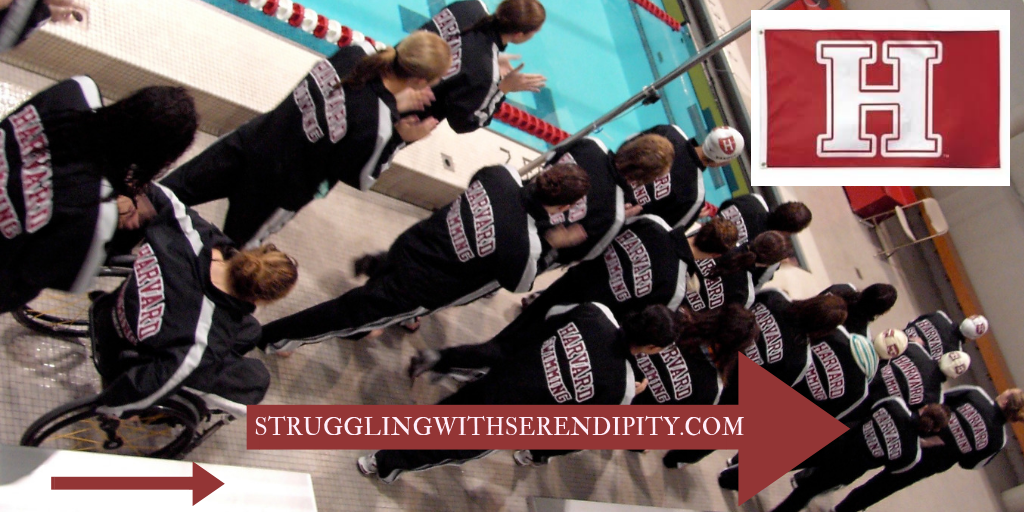

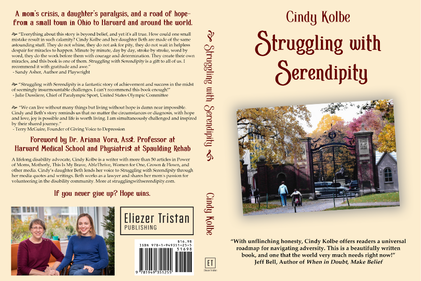



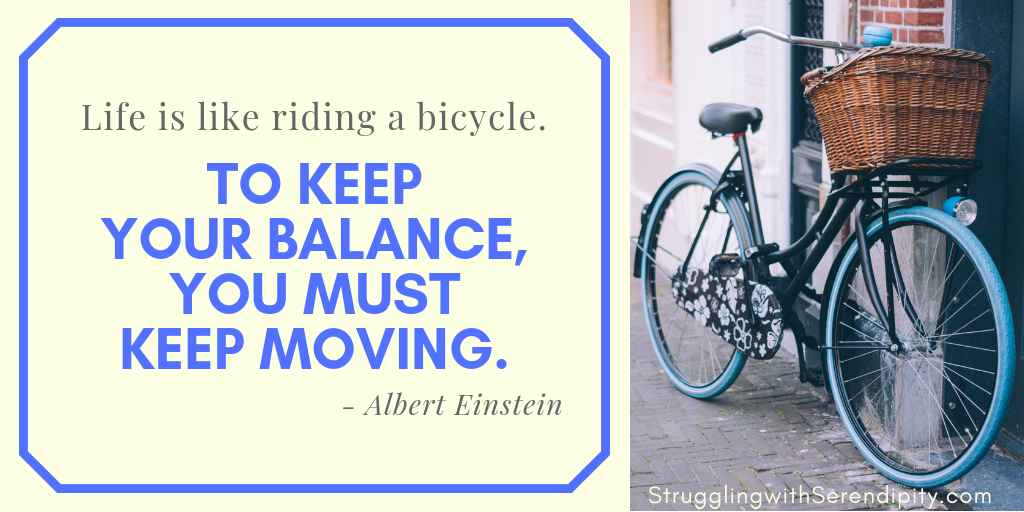


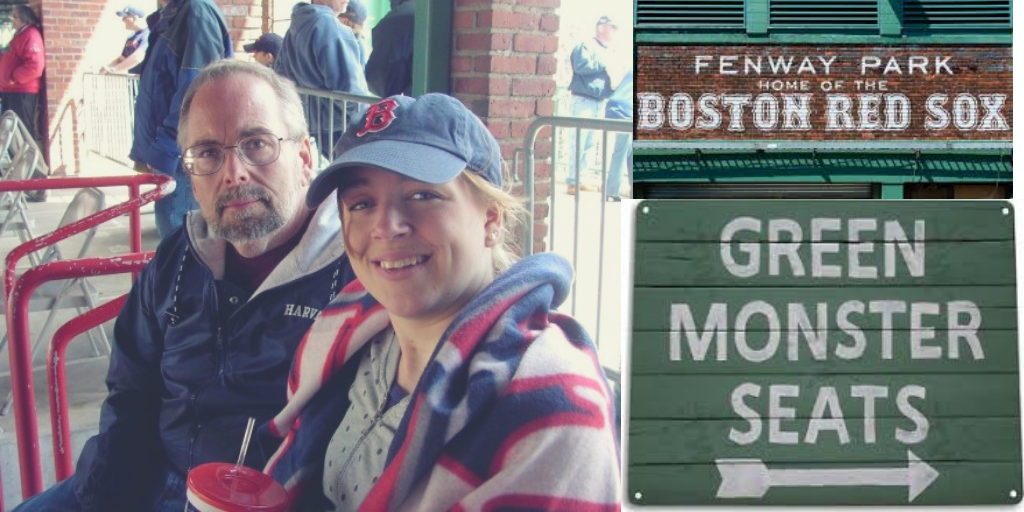

 RSS Feed
RSS Feed





